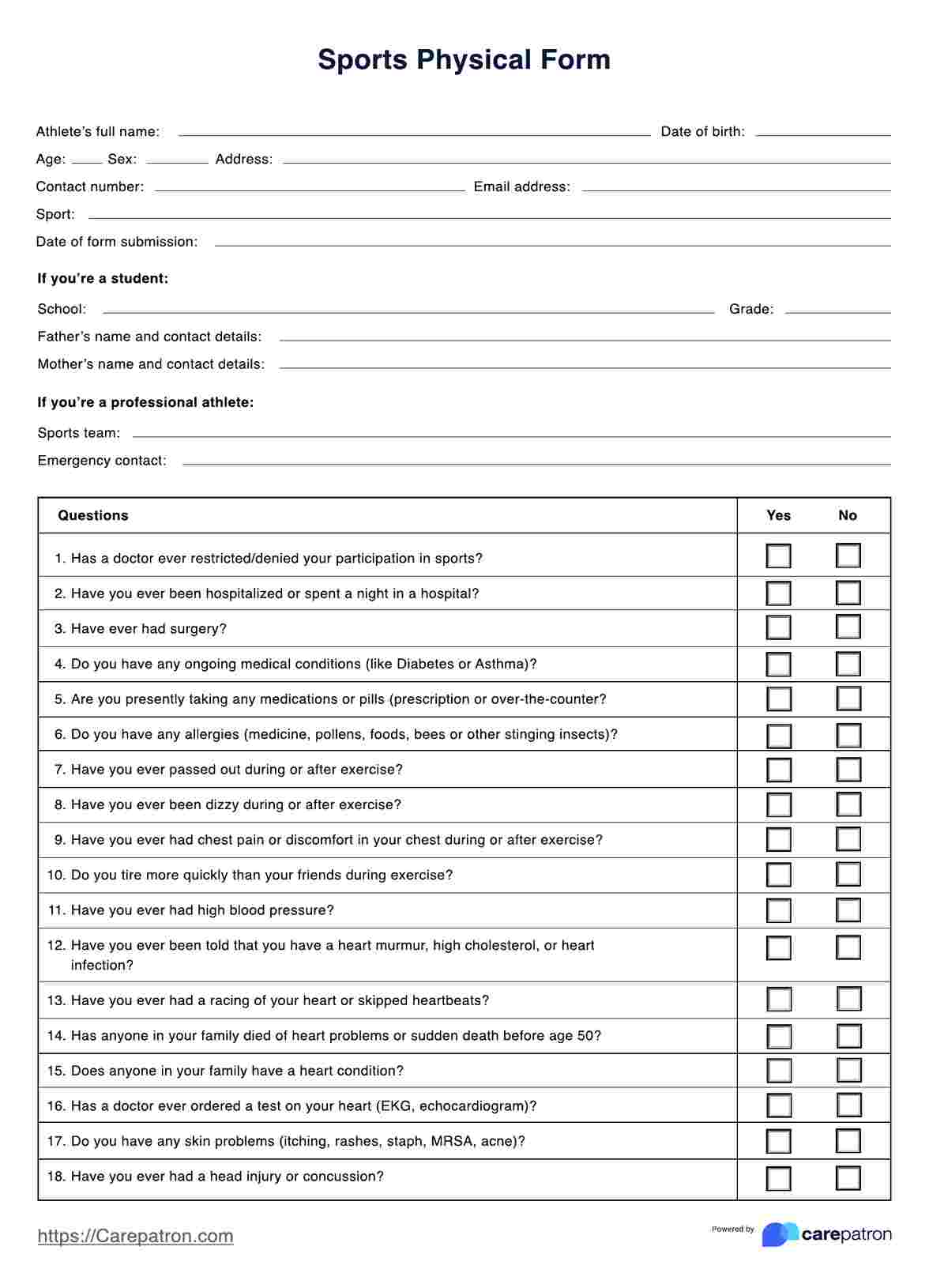Most school-aged athletes and individuals planning to participate in organized sports must complete a Sports Physical Form. This requirement can vary depending on state laws and the guidelines of the sports organization but is generally a standard part of youth sports, school teams, and collegiate programs.

Sports Physical Form
Learn all about Sports Physical Forms and download a general template for your school, local little league, or your city's team!
Sports Physical Form Template
Commonly asked questions
Athletes typically need a sports physical annually. However, the specific frequency can vary based on organizational rules and state regulations. It is recommended that the physical examination be completed at least six weeks before the start of the sports season to allow time for any necessary follow-up care.
If an issue is found during a sports physical, the healthcare provider will discuss the next steps, including additional testing, referrals to specialists, or specific treatments. Depending on the issue, the provider might temporarily withhold clearance to participate in sports until the concern is adequately addressed.
EHR and practice management software
Get started for free
*No credit card required
Free
$0/usd
Unlimited clients
Telehealth
1GB of storage
Client portal text
Automated billing and online payments











